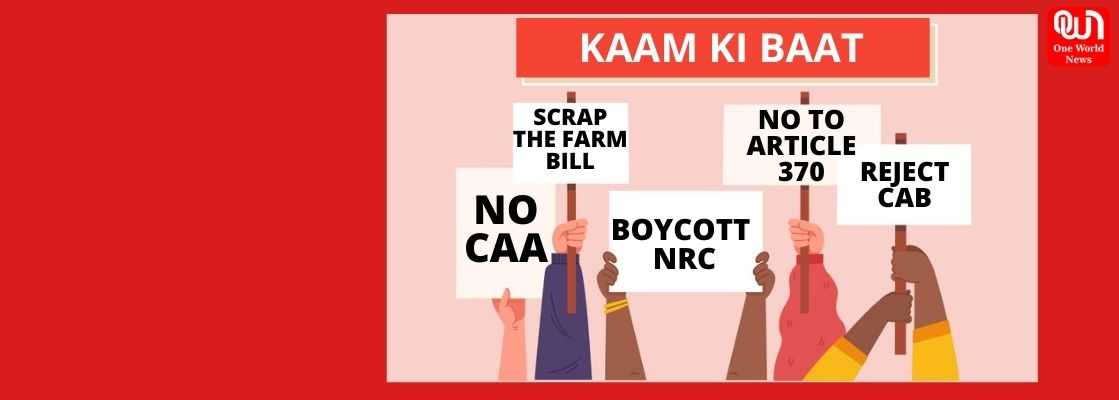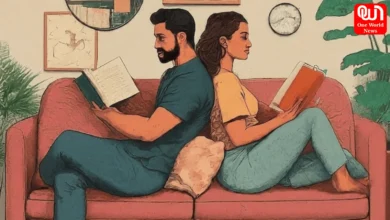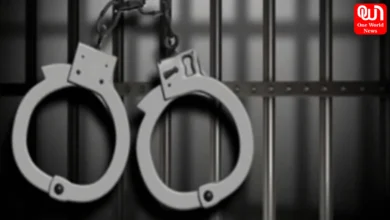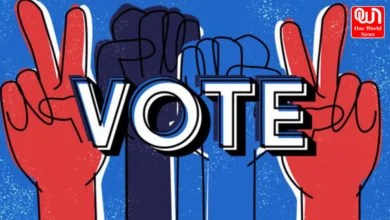
Who said protests have decreased in the Modi era?
It has been more than 6 and a half years since the Modi government has come into power in India. In all these years, many historic decisions have been taken. While some have proved game-changing for the NDA government, some have backfired at them. Democracy is such an arrangement where people show their disapproval, resentment, and indisposition by staging protests. There have been several moments in all these 6 years when thousands of people have demonstrated against the government. Have a look at prominent ones.
https://www.instagram.com/p/CISK7h8h2v5/
Farms Acts
Three farm bills, Essential Commodities (Amendment) Bill, Farmer’s Produce Trade and Commerce (Promotion and Facilitation) Bill, 2020, and the Farmers (Empowerment and Protection) Agreement of Price Assurance and Farm Service Bill, 2020 were amended in September. The government said that the new bills will increase the income of farmers and are amended in the interest of farmers.
Farmers across the country, especially in Punjab and Haryana protested against the controversial law. They demanded to quash the laws saying that new ‘draconian’ laws would lead to the end of the Minimum Support Price (MSP) and there would be a corporate takeover in the agriculture field. Some farmers fear that when they go with their produce to the corporates, the buyer might say that the quality of the product is not good so that they will have to give less money for the produce.
The central government has been making efforts to assure farmers that they will continue getting MSPs, they will be free from the clutches of middlemen, and their income would increase. The NDA government has also maintained that Foreign Direct Investment (FDI) would increase in the field of agriculture.
Despite all the efforts of governments, farmers of Punjab, Haryana, Uttar Pradesh, and Rajasthan are still protesting against the government asking the government to take back new amendments. While farmers were trying to reach Delhi for protesting, they were stopped at Delhi-Haryana and Haryana-Punjab border citing coronavirus as the reason. Police even used water cannons and tear gas against the protesting farmers.
Farmers are still protesting against at the Nirankari Ground, Burari, Delhi, and asking for the same thing.
Read more: How failure of Congress as a strong opposition has weakened democracy
Sabarimala Temple
The Supreme Court in 2018 ended a ban that prevented girls and women between 10 and 50 years from entering the Sabarimala shrine that draws millions of pilgrims every year. The apex court had then called the custom “almost like untouchability” and “restrictions can’t be treated as an essential religious practice.” However, the decision was criticized by many local devotees who believe that entering is restricted, as its presiding deity, Lord Ayyapa is considered a celibate.
After the decision, many people supported the decision of the apex court saying, there should be no discrimination between men and women in a temple.
A string of protest also took place at the Sabarimala temple and its surrounding areas in the state, when women tried to enter the shrine.
A review petition was filed later in which the Supreme Court agreed to a hearing in which it said that a 7-bench will look into the matter.
https://www.instagram.com/p/CISD8NUBvV7/
Article 370
Home Minister Amit Shah on 5th August 2019 abrogated article 370 which gave special status to Jammu and Kashmir. Article 370 along with Article 35A allowed residents of Jammu and Kashmir to have their own flag, own law, and ownership of property. Jammu and Kashmir Reorganization Act, 2019 was passed in the parliament which enacted the division of the state into two union territories – Jammu and Kashmir, and Ladakh. Lakhs of soldiers were deployed in the state to maintain law and order.
The controversial decision was celebrated and criticized equally by the world. A large section of Hindus welcomed the move, while the minority were against the decision. The matter was even taken into United Nations General Assembly by Pakistan and China. But the strong advocacy of India helped India to not make it a topic of serious discussion in the United Nations.
Demonstrations took place across the country where people opined that the people of Jammu and Kashmir should have been consulted before the decision.
According to reports, around 10,000 people protested in Srinagar against the decision of the Indian government to revoke Article 370. It was reported that some people even pelted stones on the security personnel.
Not just in India, protests took place in some other countries too. A good chunk of people protested outside the High Commission of India in London on August 10th, 2019. People came on the streets of Toronto, Canada against the decision of the Indian government. Members of the Kashmir Muslim Community held a number of protest demonstrations in the United States – New York, Chicago, Washington D.C., San Francisco, Houston, Los Angeles, and Seattle. The protest demonstration also took place in Bangladesh, Australia, France, Germany, South Korea, and Bahrain.
Goods and Services Tax
Indian Parliament launched Goods and Services Tax on July 1, 2017, to unify India in a “One Nation, One Tax, One Market, ending several state taxes & levies, and bringing goods and services with a common tax slab across states. The government said that the GST will reduce paperwork, will help logistics, and curb corruption, which will ultimately make it easier for both foreign and domestic consumers. India unified its almost three-billion dollars economy and more than 130 crore people into a common market. The GST is seen as a measure that will reap benefits in the long run.
However, when the GST was implemented across the country, small shop owners and retailers criticized it, saying that it became difficult for them to do business since the implementation of GST. Four tax slabs were created in which all the sectors were put. Due to a complex GST, changes were made on daily basis. It created problems for many people. The bill was criticized on the account of the complexities of understanding it. Protests took place across the country for taking the GST back. Experts criticized it saying that the Indian market was not ready for reform like GST, especially when demonetization had already taken place and the Indian economy was struggling.
Triple Talaq Bill`
The Supreme Court of India banned the controversial Islam practice that allows men to leave their wives immediately by stating “talaq” three times. The apex court had called the practice “unconstitutional.” Several Muslim women who were divorced under this practice, even on Whatsapp and Skype, had appealed to the top court to end the practice. A panel of five judges from different major faiths – Hinduism, Islam, Christianity, Sikhism, and Zoroastrianism, had delivered this historic judgment. The verdict indicated the stand of the government, which believed that Triple Talaq was against the fundamental rights of women. The NDA government made the Triple Talaq a punishable offense through an executive order.
A section of Muslim women thanked PM Modi for a law against the Triple Talaq instant divorce. However, another section of Muslims criticized the NDA government for interfering with the Islam practice. Critics of the law said that three years imprisonment for so-called instant divorce can be misused to target Muslims and who will take care of the family if the husband gets jail-term for three months. There was outrage in the conservatives Muslims who didn’t want their practice to become a criminal offense.
Citizenship Amendment Act
One of the most controversial laws of the decade, the Citizenship Amendment Act, which provides a pathway to the minorities in the neighboring countries Bangladesh, Afghanistan, and Pakistan to become a citizen of India, drew the biggest protest ever since the Anna Andolan in 2011. The exclusion of Muslims from the law was seen as a step towards Hindu-Rashtra by the critics of the NDA government.
Citizenship Amendment Act was linked to the National Register of Citizens, as Amit Shah had claimed about implementing the NRC across India. Later huge protests took across India at universities, roads, and colleges. The Shaheen Bagh protest and Jamia Nagar protest are two protests, which became hugely popular. CAA protests also became the reason for Delhi-riots which claimed around 50 lives. The women protestors at Shaheen Bagh were not ready to go and had continued to protest for more than 100 days. It was coronavirus which finally ended the sit-in protest of Shaheen Bagh.
Advocate Rajesh Singh, while talking to us said, “The Modi regime has been significant in terms of protests. People say that he is an authoritarian and promoter of fascism, but if you look closely, there have many protests like the ongoing Farm Protest, OROP protest, or Citizenship Amendment Act. There have been protests now and then.”
Have a news story, an interesting write-up or simply a suggestion? Write to us at info@oneworldnews.com








